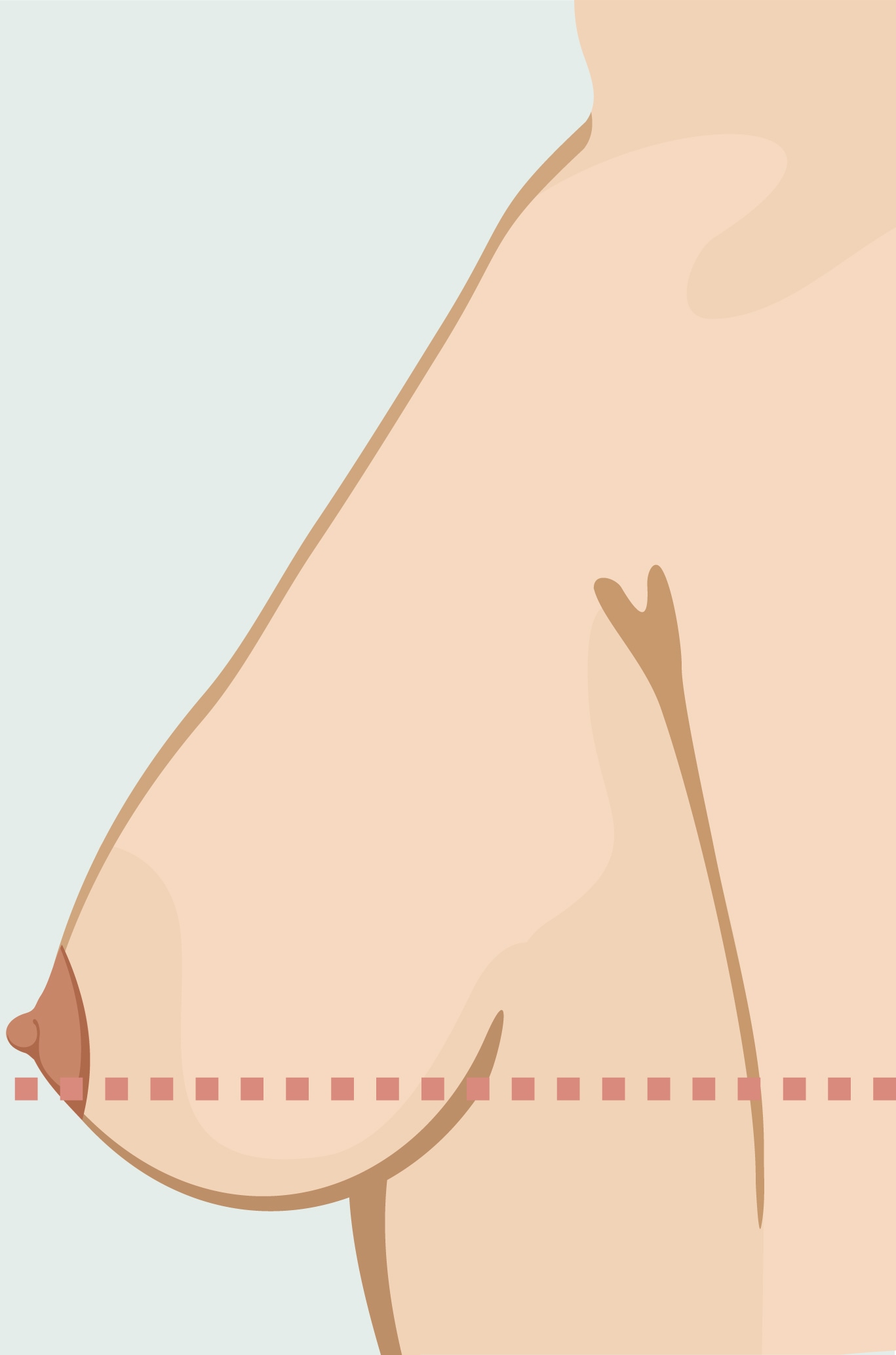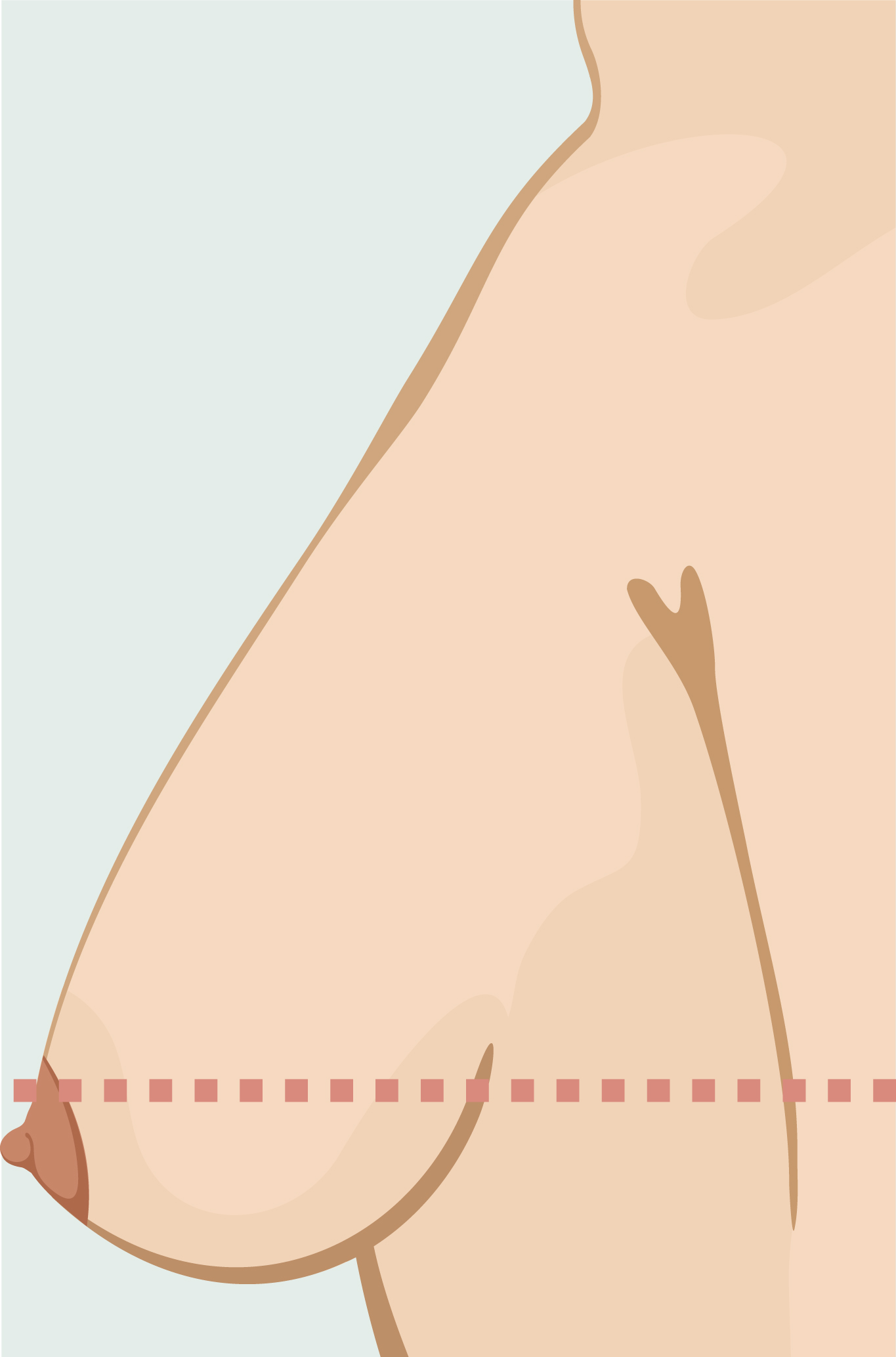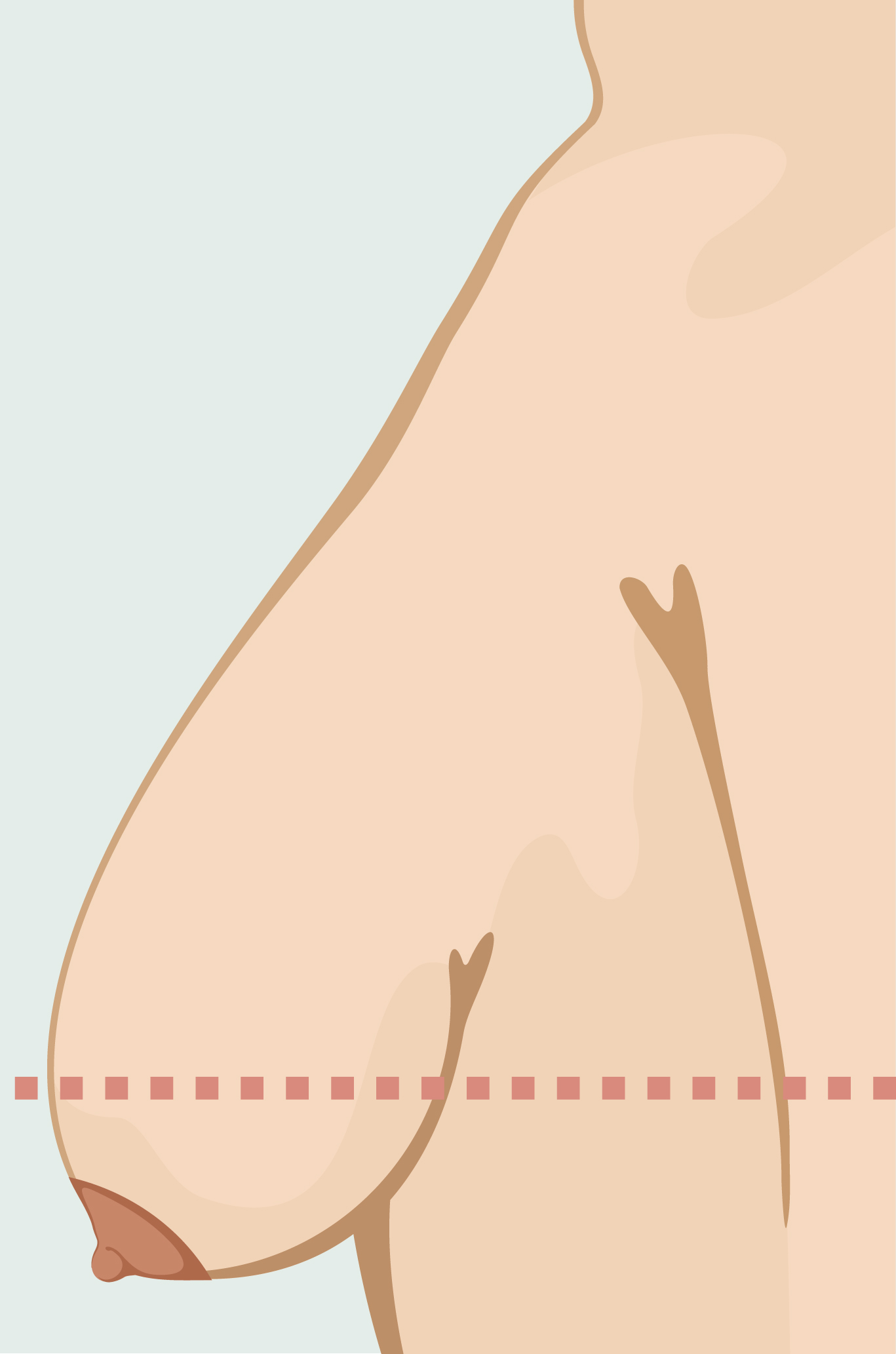Many women are troubled by breasts that have lost elasticity and begun to sag due to the effects of pregnancy, nursing, weight fluctuations, time, or gravity. Breast lift surgery, also known as mastopexy, can be a powerful solution to resolve breast ptosis—or the drooping of breast tissue over time. In addition to repositioning the breast tissue, nipples, and areolas to a higher location on the chest wall, a breast lift is designed to restore a more youthful shape to breasts that have “deflated” or lost contours. This can simultaneously improve projection while achieving a “perkier” bust.
Dr. Nichole Joslyn and Dr. Tiffany McCormack are Reno-based board-certified plastic surgeons who can personalize the breast lift procedure to make your aesthetic goals a reality. With advanced breast lift techniques and meticulous incision placement, Dr. McCormack and Dr. Joslyn can rejuvenate your breast contours while creating elegant, natural-looking results.

Why Undergo Breast Lift Surgery?
A breast lift can offer several benefits for women who wish to rejuvenate the appearance of their breasts. Based on your personal needs and cosmetic goals, mastopexy can help:
- Correct breast drooping created by lax, excess skin
- Raise the breasts to a more youthful location on the chest
- Improve overall breast contour and symmetry
- Resize and/or reposition the nipple-areolar complexes
- Enhance how particular blouses, bras, and bikini tops fit
- Boost your self-confidence and esteem in personal and social situations
Our plastic surgeons can also combine a breast lift with breast augmentation for patients who have thin, drooping breasts with nipples at or below the fold. A breast implant can often help shape the breast and provide fullness in the upper portion—even if you do not necessarily desire a larger breast size. Whether you would like to incorporate or forgo breast implants, a treatment plan can be customized according to your unique needs and goals.
Is a Breast Lift Right for Me?
A breast lift can help patients who feel dissatisfied with the shape or positioning of their breasts. The procedure is often very successful for women who have had children or lost a significant amount of weight, as these factors tend to stretch the breast contours. In addition, those considering a breast lift should be:
- A non-smoker, or willing to quit smoking
- In reasonably good health with no unmanaged medical conditions
- Optimistic about the potential outcome of surgery
- Able to maintain realistic expectations for the final results
If your breasts and/or nipples have stretched over time, or if your nipples point downward, these can be physical indications that you may benefit from breast lift surgery. The only way to know whether mastopexy can achieve your goals is to consult with a board-certified aesthetic plastic surgeon like Dr. McCormack or Dr. Joslyn.

How is the Breast Lift Procedure Performed?
To perform mastopexy, our surgeons will first employ the incision technique that was decided upon at the time of the consultation. Next, she will remove loose, excess skin and raise internal breast tissue to an elevated, more youthful position on the chest wall. Once in position, the breast tissue is recontoured until an optimal shape is created, and the nipple-areolar complexes are resized/repositioned if necessary. To complete the surgery, the remaining skin is then pulled taut and carefully reattached using small surgical sutures.
The entire breast lift procedure generally takes about two hours to perform, but this timeframe may be extended if breast implants are being placed to simultaneously add or restore breast volume. As an outpatient operation, patients can usually return home the same day under the care and supervision of a friend or loved one.
What is Recovery From a Breast Lift Like?
Following breast lift surgery, most patients can expect some swelling, bruising, and/or tightness to be apparent in the breasts, though these symptoms should fade over time. Any potential pain or discomfort can typically be alleviated with medication, and the majority of individuals are able to resume work and other non-strenuous daily routines after a week or two. That said, all activities that might put strain on the breasts—such as strenuous exercise, heavy lifting, contact sports, etc.—will need to be avoided for at least a few weeks to provide ample time for the breasts to fully heal.
Throughout the recovery process, our board-certified plastic surgeons will be available to answer any questions or address any concerns that may arise, and she will monitor all healing progress over the course of multiple postoperative visits to ensure an optimal outcome is achieved.

How Much Does a Breast Lift Cost?
While the cost of mastopexy varies between different geographic locations, the price of a breast lift in the Lake Tahoe area depends on factors unique to each person’s treatment plan. This includes the expenses normally associated with surgery, including the anesthesia’s fee and surgeon’s fee, among other costs. Other details that may affect your cost estimate include:
- The surgical technique utilized
- The extent of surgical work necessary to achieve your goals
- Whether you’re receiving breast implants at the same time as your mastopexy
Once we gain an idea of your needs and overall goals, our team will be able to provide you with a personalized quote. We would be happy to discuss your payment options after your consultation, and our office also accepts plastic surgery financing for qualified patients through CareCredit®, ALPHAEON Credit™, and Prosper® Healthcare Lending.
Will My Breast Lift Scars Be Noticeable?
Unfortunately, some degree of scarring from breast lift surgery is unavoidable since incisions are needed to perform the procedure. The good news is mastopexy scars can usually be hidden underneath most bra and swimsuit varieties, regardless of which incision pattern is utilized. In addition, scars tend to fade over time for many individuals, and the majority of patients note that the results achieved with breast lift surgery far outweigh any concerns they had about scarring in the first place. Following the procedure, your surgeon will provide specific instructions for how to care for your incisions as they heal in order to help improve the final appearance of any scars.

Can I Breastfeed After a Breast Lift?
You should still retain the ability to breastfeed after surgery as long as you communicate your desires to Dr. McCormack or Dr. Joslyn. Assuming you were able to breastfeed in the first place, our plastic surgeons can utilize an incision technique that does not detach the nipples and leaves the nerves and ducts of the breasts intact. That said, many women are not able to breastfeed even before undergoing breast surgery—this cannot be changed regardless of whether a breast lift is performed. Rest assured that, if desired, our surgeons will further explain how a breast lift may impact the ability to breastfeed in person.

Is a Non-Surgical Breast Lift Possible?
Unfortunately, the factors that lead to ptosis (sagging) and/or a loss of shape in the breasts cannot be corrected without surgery. As your body’s natural production of collagen and elastin begins to decrease over time, the skin often loses its elasticity in conjunction with a noticeable loss of breast volume. Together, these forces can cause round, youthful breast contours to flatten and elongate — sometimes leading to pendulousness (or sagging) in the chest. Needless to say, skin laxity and lost breast volume are not factors that can be corrected with “breast lift exercises” or other natural remedies. In fact, any workouts that claim to naturally lift the breasts usually just strengthen the chest muscles rather than reshaping and rejuvenating the bust.
Although it can be distressing to notice your breasts change over time, breast lift surgery has helped countless women restore the proportional, youthful contours they desire. Not only can this procedure improve the shape of the breasts, but surgery can also reposition and resize the nipples to provide a more harmonious, natural-looking aesthetic.
Are There Alternatives to Breast Lift Surgery?
While the results of surgery can be very transformative, a breast lift may not be the most ideal treatment for every patient who wants to improve their breasts. If you have sagging breasts but you’re also bothered by an overly large breast size, you may consider the breast reduction procedure. A breast reduction involves many of the same techniques as mastopexy, but the primary goal of the procedure is to make the breasts lighter and more proportional rather than simply lifting the breasts. Breast reduction is also designed to alleviate symptoms such as back pain, poor posture, skin irritation, and chafing caused by an excessive breast size; therefore, this procedure may be the best treatment option for patients who feel like their large breasts are holding them back. Fortunately, the nature of breast reduction typically provides a “lift” in the breasts to some extent.
On the other hand, patients who want fuller, more voluminous breasts may be better served with breast augmentation rather than mastopexy. While both procedures enhance the shape and contours of the breasts, a breast lift does not increase volume or size. That said, women who primarily want to achieve a bigger breast size may benefit more from breast augmentation or a breast lift with implants, which combines both procedures. Our team would be happy to help you determine the most optimal treatment plan for your individual concerns.
Additional Breast Lift FAQs
Can I do exercises to lift the breasts instead of surgery?
While chest exercises like pushups, bench press, flyes, etc. can certainly help tone and sculpt the breasts, there is no workout technique that can significantly elevate the position of the breasts on the chest wall. This is because chest exercises help to build muscle and reduce fat around the breasts, but they do not address the loose, excess skin that is responsible for breast sagging. To effectively correct this concern, surgery is usually necessary.
Should I get implants with my breast lift?
For some individuals, combining breast augmentation and breast lift surgery can improve the overall look and feel of their breasts. Since mastopexy alone will not increase breast fullness, you may want to consider a breast lift with implants if you have lost breast volume and are seeking to restore the breasts to their former size, or if you wish to simply add additional volume. Our plastic surgeons can help you make this decision after reviewing your unique needs and goals at the time of the consultation.
Will a breast lift make my breasts smaller?
While mastopexy removes excess skin, fat, and glandular tissue causing a sagging look, a breast lift should not noticeably change your breast size. Rather, the procedure is designed to enhance the shape of the breasts and improve projection. If you would also like a fuller breast size or if you desire more breast volume, our surgeons can speak with you about placing breast implants at the same time as mastopexy to simultaneously address the size and shape of the breasts.
What type of bra should I wear after a breast lift?
You will receive more detailed guidance in your post-operative instructions, but generally speaking, it’s best to wear the provided surgical bra/garments for the amount of time prescribed by your surgeon. After you’re cleared to start wearing your own bras, a supportive sports-like bra with wide straps and clasps in the front is recommended to minimize lifting, raising, and pulling motions during the healing process.
Will I maintain nipple sensation after a breast lift?
During the healing process, it’s not uncommon to experience numbness and/or a loss of sensation in the nipples. In most cases, this is only temporary and normal sensation should return within six to eight weeks after your surgery. This timeframe varies from patient to patient and our plastic surgeons will give you a better understanding of what you can expect when you meet with her in a consultation.
Does insurance cover a breast lift?
As a cosmetic procedure, breast lift surgery is typically not covered by insurance companies. However, the costs of surgery can be made more manageable through financing plans offered by CareCredit®, ALPHAEON Credit™, and Prosper® Healthcare Lending. These highly reputable lending companies present qualified patients with various short- and long-term payment plans so they can select the most ideal option for their unique budget. Many patients utilize these low- to no-interest financing companies to pay for their treatment in smaller, more affordable installments rather than a lump sum.


